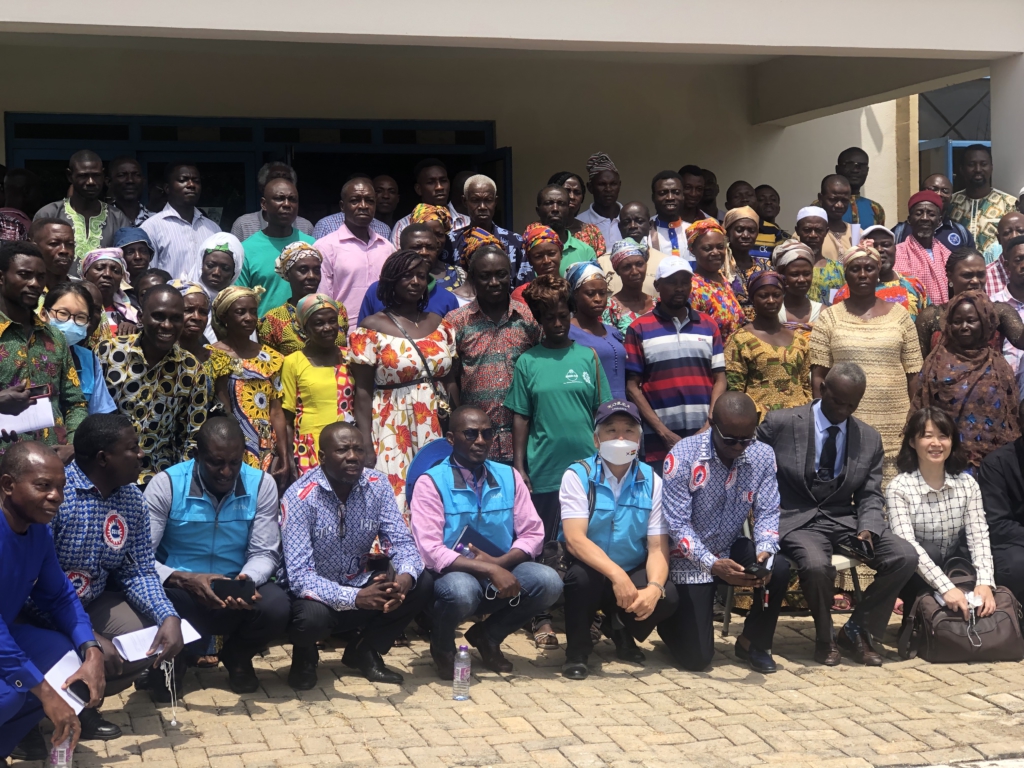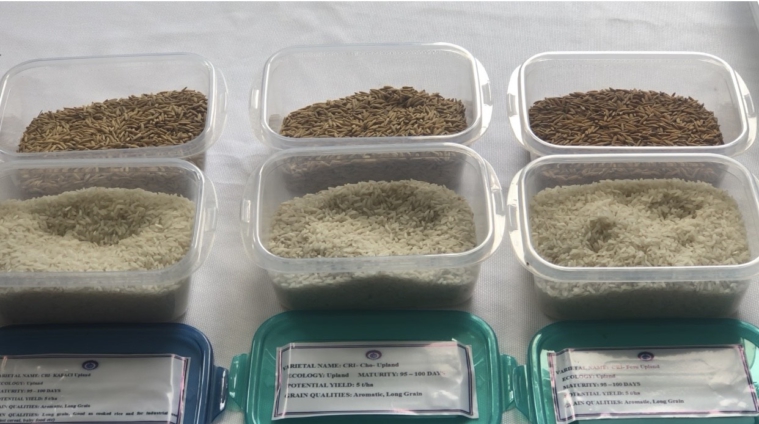Nine new rice varieties have been unveiled for cultivation by the Crops Research Institute of the Council for Scientific and Industrial Research (CSIR-CRI) in collaboration with the Kopia Ghana Center.
The new varieties are aromatic, fertilize and mature within a short period.
The varieties can produce more yield compared to other rice varieties on the market and help mitigate rice importation.
They are adaptive and can survive atmospheric challenges that cause low rice production.
Deputy Director of the Crops Research Institute, Dr. Maxwell Asante, explains that the nine varieties consist of low and upland varieties that enable high-yielding returns within a short period.
He said the varieties survive in irrigated ecologies which would enable farmers to cultivate through the year and feed baby food-production industries.
“Three are upland varieties which have better grain quality, aromatic and low to intermediate amylose content that doesn’t become hard when you cook it.
“We have introduced six new lowland varieties. Some of them are for cooked rice, long grain and aromatic. It is better than Agra-rice because it matures 15 days earlier. It helps the farmers to cultivate more times during the year. It is shorter and can grow in irrigated ecologies and doesn’t log. Some are developed specifically for industries. They have high starch paste viscosity, so it is good for baby foods and industrial use,” said Dr. Asante.
Ghana spent $391million on rice importation in 2020, making it the third-largest imported product in the country and 20th in the world.
The CSIR-CRI new rice varieties seek to mitigate the importation menace.
Director of Kopia Ghana, Kim Choong-Hoe, says the collaboration with CSIR-CRI is to facilitate the adoption of modern technology for rice cultivation to achieve high yields.
“We want to improve the cultivating methods of Ghana and get more yield. Introducing the advanced technology that is needed to change high variety from raw yield and then improve the cultivation method to increase yield for export.
“In this country, we have to import from other countries, half of the demands. Every year, 950 thousand tonnes are imported from another country. We want to make half of it by introducing high-yielding variety and modern technology. I think it is the right time to help Ghana's young people,” he said.
Mariama Mohammed, a farmer from Konongo Noboamu in the Asante Akim Central district, lauded the new varieties.
“We are hoping that their new technology will help us because rice farming is difficult, but it is beneficial. We are hoping they bring more of these technologies to assist us. The proceeds of the rice we saw at the exhibition were nice,” she said.

The government has been entreated to assist farmers to develop lowlands and provide subsidies for fertilizers.
“Government has to support farming by helping us to develop lowlands, else we will not have the full potential of these varieties.
“The government must work out a structure where farmers can get fertilisers to add. With that we can be self-sufficient in rice production in the shortest possible time,” said Dr Maxwell Asante.
Latest Stories
-
Man remanded for uploading nude videos of a lady he lured into a relationship
14 mins -
Explainer: What is the Cash Waterfall Mechanism?
36 mins -
Survivors of child trafficking overcome adversity, excel in tertiary education
1 hour -
Confront the barriers to your progress – Professor Lydia Aziato challenges the youth
2 hours -
Expertise France leads EU-funded initiative empowering African Journalists to combat human trafficking
2 hours -
Ghana Grows Programme empowers Ghanaian youth through Youth Policy Dialogue
2 hours -
Eastern NDC raises GHS5.4m to support Mahama’s 2024 campaign
2 hours -
Kumawood actress Akyere Bruwaa condemns death rumours
2 hours -
Ghana Institution of Engineering calls for proactive measures to prevent flood disaster
2 hours -
Who pays for the extra cost? – COCOBOD CEO questions EU on new regulations
2 hours -
‘Dumsor’ will be over by end of May – Former NPP MP assures
3 hours -
Power crisis is not about money – NPP Manifesto Committee member
3 hours -
Education Minister urges graduates to embrace opportunities
3 hours -
UN rights chief ‘horrified’ by mass grave reports at Gaza hospitals
3 hours -
We need more resources to deal with flooding – NADMO
3 hours

